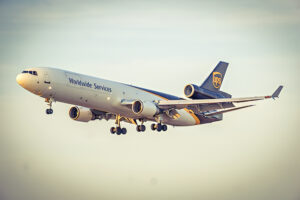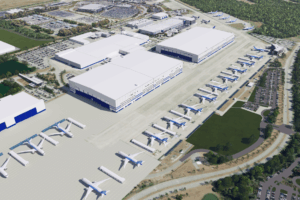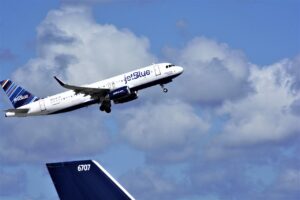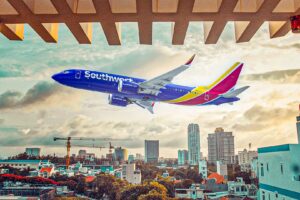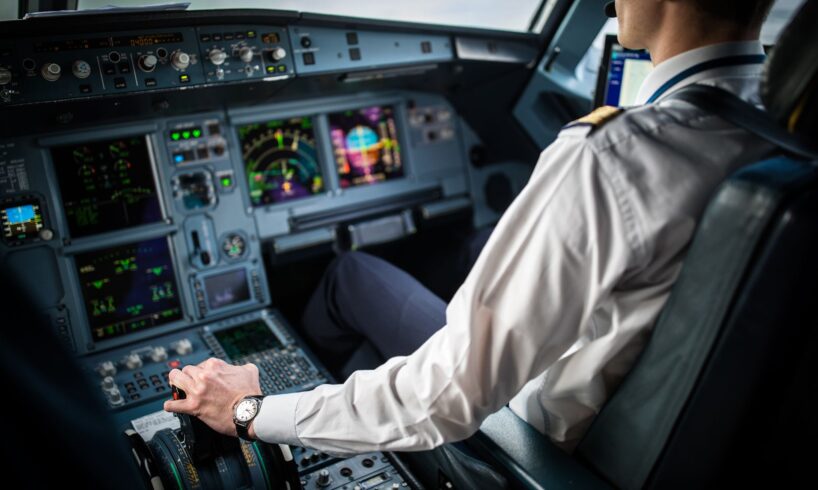
The aviation industry, including aircraft pilots in particular, has historically had a fairly glamorous reputation in the United States. Over the course of eight decades since the end of World War II, this image was bolstered by popular Hollywood movies, national space/aviation icons (John Glenn), workaday airline heroes (Captain “Sully” Sullenberger), and war-era political leaders (George H. W. Bush).
Commercial pilots have the opportunity to make a very comfortable salary in the United States. As the commercial aviation sector continues to grow, let’s take a look at the prospective salaries for commercial pilots in the United States. The first step is to obtain one’s commercial pilot license (CPL). Two numbers to remember: 250 total hours (including 100 hours as the pilot-in-command, or PIC) is the FAA (FAR Part 61) requirement for a commercial pilot certificate.
How Much Does A Commercial Airline Pilot Make?
Photo: Delta Air Lines
To become a commercial airline pilot? It can take over two years to gain the required 1,500 hours of flight time for an Airline Transport Pilot (ATP) Certificate. Adjustments to the 1,500-hour rule may be made for those with an aeronautical-related bachelor’s or associate’s degree from an accredited aviation school or academy, as well as those with pilot experience in the military.
Like so many fields that have an air of glamour, commercial aviation requires experience and working one’s way up the ladder of seniority in order to secure a lucrative salary. Several factors influence the pay of commercial pilots: years of experience, education, type of aircraft flown, union contract requirements, as well as aviation market conditions.
The chart below represents 2025 pilot salary data from ATP Flight School, the nation’s largest pilot certification flight school. ATP’s main campus is located in Ponte Vedra Beach, Florida, west of Jacksonville. ATP claims a training fleet of over 600 aircraft and over 13,000 FAA certifications issued each year. The salary figures below, based on airline, seniority, and aircraft type, represent averages and approximations from ACN The Grid and AirlinePilotCentral.
Airline (category)
Aircraft | # of flight hrs/month
1st officer (1st year)
Captain (Year 6)
Captain (Year 12)
United (full service)
A320/737 at 73 hrs/month
$115,621
$327,922
$342,997
Delta (full service)
A320/737 at 72 hrs/month
$113,476
$321,594
$336,365
Southwest (low-cost)
737 at 87 hrs/month
$125,731
$315,883
$330,595
Alaska (low-cost)
737 at 75 hrs/month
$114,928
$310,984
$325,474
Spirit (low-cost)
A320 at 72 hrs/month
$110,221
$313,467
$338,500
Breeze (low-cost)
A220 at 70 hrs/month
$101,500
$230,200
$259,000
FedEx (cargo carrier)
A310 at 85 hrs/month
$82,690
$287,566
$300,859
As noted from the salary data in the above chart, there is a wide range in commercial pilot salaries (and the reporting thereof). Another flight academy school, US Flight Co., lists salaries that are about 20% lower on average than those above for early career first officers and captains.
Various Factors Affect Pilot Pay
Photo: CactusPilot | Shutterstock
Several figures can grab attention, too. Epic Flight Academy and Thrust Flight, both pilot training schools, each state the median airline pilot salary for 2023 as $219,140. Flying Magazine gives the figure of $113,080 for the median annual salary for commercial pilots in 2024. The US Bureau of Labor Statistics data on commercial airline pilot median pay in 2023 of $171,210. ZipRecruiter states the average annual pay for a commercial airline pilot in the United States is $87,144 in 2025.
An important component of commercial pilot pay is the hourly pay rate, which is determined by salary structure and union contract language. Pilots at United Airlines, for example, are paid between $120 and $352 per hour, depending on seniority and aircraft type. Generally, first officers and captains of widebody jets like the Boeing 787
and 777 have more seniority and experience. Accordingly, they earn more than narrowbody Boeing 737
and Airbus A320
pilots. More on the hourly pay rate below.
Again, the important factors affecting pilot pay:
The type of airline (legacy full-service, low-cost, regional, charter, etc.)
Flight deck role (first officer or captain)
Seniority (pay scales increase with years of service)
The type of aircraft (widebody, narrowbody, regional jet)
Monthly flight hours and contract language (work hours versus flight hours)
How Many Years Does It Take To Make Over $400,000 As A Pilot?
Not all pilots will earn this much, but some can reach this level after over 20 years in the industry.
For pilots, a seniority number is assigned that is generally based on the date of the pilot’s hire by a given airline. The pilot’s position, or rank, will rise as the pilot’s career continues. The higher a pilot’s seniority number, the more freedom and choice that pilot has when it comes to scheduling, home base and route choice.
Regional Airline Pilots
Photo: Cory W. Watts | Creative Commons Attribution- 2.0
Regional airline pilots generally fly passengers to and from mid-size secondary aviation market cities. Regional carriers like Endeavor Air, SkyWest, Envoy Air, among many others, play an important role in providing air service to secondary and underserved markets as well as supporting (feeding) large commercial carriers serving the nation’s major commercial aviation markets.
According to CNN, over 30% of all flights flown by US airlines were flown by regional carriers in 2023. This was down from 46% in 2014, as reported by the Regional Airlines Association. Since regional planes are smaller, however, data from aviation analytics firm Cirium reportedly indicates they only make up about 14% of the number of seats flown.
Regional pilots typically fly between 19 and 70 passengers on small twinjet aircraft. Generally, regional airlines require pilots to have less experience than larger legacy carriers. It is common for new commercial pilot license holders to work for a regional air carrier in order to obtain enough flight hours that would enable them to join one of the larger legacy carriers or low-cost carriers.
Regional carrier pilot and first-officer salary range data from US Flight Co., an Iowa-based pilot training school: $60,000 to $90,000 for first officers and $120,000 to $215,000 for captains.
Additionally, a shortage of qualified commercial pilots for large legacy carriers and regional carriers alike will only grow in the coming years. As an entry point for commercial pilots, regional airlines now offer many incentives to qualified candidates, from signing bonuses to tuition reimbursement and healthcare benefits.
How Are Pilots Paid?
Photo: Aer Lingus
People pursue a career as an airline pilot for several reasons, from the glamour of travel to the thrill of flight to the joy of mastering the technical complexities of modern commercial aircraft. It’s worth remembering that the investment in flight training can be substantial—flight school training costs can often reach over $100,000. But it’s important to understand how pilot pay is calculated.
Airline pilots are paid hourly, based on flight time—the hours spent from when the aircraft first leaves a gate under its own power for takeoff until it comes to a stop after landing. Here’s a pilot salary scenario to consider:
A key formula: (HOURLY PAY RATE) X (FLIGHT HOURS).
Most commercial airline pilots are contractually guaranteed a minimum number of hours per month—the monthly guarantee.
The typical guarantee: 70–80 flight hours/month.
Hourly pay rate: This varies by airline, seniority, aircraft type, and position.
A first-year First Officer might earn $90/hour
A senior Captain on a widebody aircraft might earn $300+/hour
Example: A pilot flying 75 hours/month at $120/hour = $9,000/month, or $108,000/year (not including other benefits or per diem when on duty).
Per diem: Represents pay that pilots receive for time away from their base. It covers food and other expenses and generally ranges between $1.50 and $3 per hour, or it could be a per-day rate. A pilot’s per diem pay could amount to more than $7,000 a year.
Pilots flying for Part 135 (commuter, on-demand, or charter flights) and Part 121 (U.S.-based commercial airlines, regional carriers, cargo operators) operators are limited by FAA regulations as to the number of hours they can fly within a day, month, and year. An airline transport pilot can fly up to eight hours per 24-hour period and up to 10 hours if a second pilot is aboard. The typical commercial airline pilot will fly roughly 700 hours per year. FAA regulations for crew member pilots (Part 121) set a maximum of 1,000 hours of flight time in any 12 consecutive calendar months.
Future Prospects For Commercial Airline Pilots
Photo: NYC Russ | Shutterstock
Is 2025 one of the best times to become a pilot? Perhaps. The mandatory commercial pilot (Part 121) retirement age is 65, a subject that has generated recent debate as pilots retire and the general workforce ages. Generally, pilot salaries have been increasing yearly just as more Americans are flying on commercial aircraft—and pilot retirements continue.
According to Airlines for America, more than half of US citizens reported taking at least one airline trip since last year, which was the first time ever.
The 2024 Occupational Outlook Handbook from the US Bureau of Labor Statistics provides two important statistics on the commercial airline pilot employment outlook. The handbook projects a 10-year (2023-33) 5% occupational growth rate outlook: “18,500 openings for airline and commercial pilots are projected each year, on average, over the decade.”
Related
Are Pilots Worried About AI Taking Their Jobs?
Autopilot systems are the most utilized piece of automated aviation technology today.

